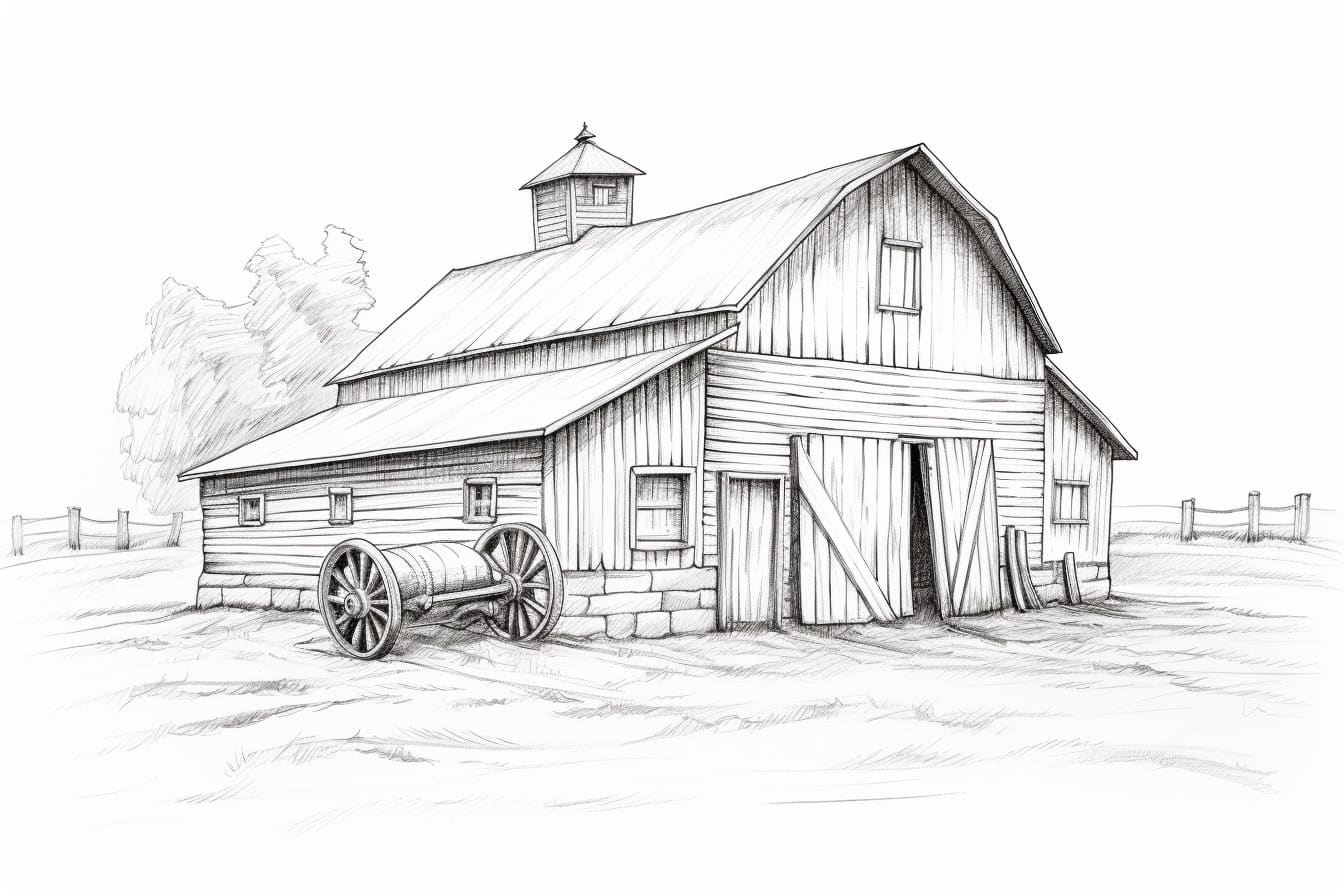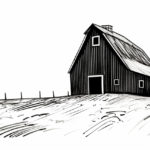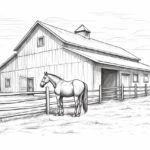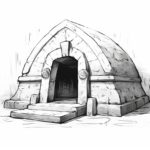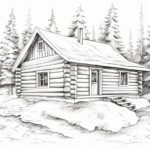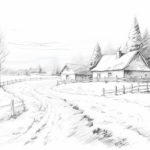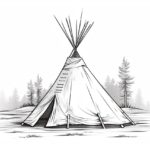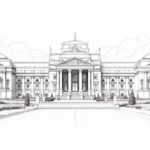Drawing an old barn can be a captivating experience for any artist, as it offers a unique blend of rustic charm, architectural detail, and historical significance. The weathered wood, rusted metal, and overgrown surroundings of an old barn provide a rich tapestry of textures and colors to explore on paper. In this guide, we will delve into the key elements to consider when drawing an old barn, from capturing the character of the structure to conveying the passage of time through your artwork. Whether you are a beginner looking to hone your drawing skills or an experienced artist seeking a new subject to tackle, drawing an old barn is sure to inspire and challenge you in equal measure. So grab your pencils, pens, or charcoal, and let’s embark on a journey to bring the rustic beauty of an old barn to life on the page.
Materials Required
To draw an old barn, you will need the following materials:
- Drawing paper or sketchbook
- Pencils (different grades for shading)
- Eraser
- Drawing pens or fine liners for outlining
- Ruler or straight edge for drawing straight lines
- Reference photo of an old barn for inspiration and accuracy
- Optional: charcoal or pastels for adding texture and shading
These materials will help you create a detailed and accurate drawing of an old barn.
How to Draw an Old Barn: a Step-by-step Guide
Step 1: Gather Your Materials
Gather all the necessary materials for drawing the old barn. You will need a pencil, eraser, drawing paper, ruler, and reference image of an old barn for inspiration.
Step 2: Start with Basic Shapes
Begin by lightly sketching the basic shapes of the old barn. Start with a rectangle for the main structure of the barn and add a smaller rectangle on top for the roof. Use the ruler to ensure straight lines and proper proportions.
Step 3: Add Details to the Barn
Add details to the barn such as the doors, windows, and any other architectural features. Old barns often have weathered wood, so consider adding texture and details to show the age of the structure.
Step 4: Draw the Roof and Siding
Sketch the roof of the barn, adding details such as shingles or a metal roof. Add horizontal lines to represent the siding of the barn, making sure to vary the line weight to show depth and dimension.
Step 5: Add Surrounding Elements
Consider adding surrounding elements to enhance the composition, such as a fence, trees, or a dirt road leading up to the barn. These elements will help place the barn in its environment and add visual interest to the drawing.
Step 6: Refine Details and Texture
Go over the drawing and refine the details, adding texture to the wood and other surfaces of the barn. Consider using cross-hatching or shading to create depth and realism in the drawing.
Step 7: Finalize the Drawing
Once you are satisfied with the details and overall composition, go over the drawing with darker lines to define the shapes and add contrast. Erase any unnecessary guidelines and smudges to clean up the drawing.
Step 8: Add Shadows and Highlights
To add depth and dimension to the drawing, consider adding shadows and highlights to certain areas of the barn. This will help create a more realistic and three-dimensional appearance.
Step 9: Sign and Date Your Drawing
Finally, sign and date your drawing to mark it as your own creation. Consider adding your own artistic flair or personal touches to make the old barn drawing unique and special.
Conclusion
In conclusion, drawing an old barn can be a rewarding and fulfilling artistic challenge. By following the steps outlined in this article and practicing regularly, you can improve your skills and create beautiful, detailed representations of these iconic structures. Remember to pay attention to details such as texture, perspective, and lighting to bring your drawing to life. With dedication and patience, you can capture the rustic charm and character of an old barn in your artwork. Keep practicing and exploring new techniques to continue growing as an artist.
Fun Facts About Old Barns
- Barns were traditionally painted red because farmers believed the color would help absorb sunlight in the winter to keep the barn warmer.
- Some old barns have unique architectural features such as cupolas, which were designed to provide ventilation and natural light to the interior of the barn.
- Many old barns were built using traditional timber framing techniques, which involved joining large wooden beams together without the use of nails or screws.
- Barns often served as community gathering places, where farmers would come together for social events, barn dances, and other celebrations.
- Some old barns have intricate folk art painted on their exteriors, depicting scenes from farm life, animals, or historical events.
- Barns were essential for storing hay, grain, and livestock feed to sustain farm animals through the winter months when fresh pasture was not available.
- The design and layout of old barns were often influenced by regional farming practices, climate, and available resources, resulting in a wide variety of barn styles across different regions.
- In some cultures, barns were considered sacred spaces and were blessed by priests or used for religious ceremonies.
- Many old barns have weather vanes on top of their roofs, which were used to indicate the direction of the wind and help farmers predict weather patterns.
- The decline of small family farms and the rise of industrial agriculture have led to the abandonment and deterioration of many old barns, making preservation efforts important to protect these historic structures.
Suggestions for Scenes and Settings for Old Barn Drawings
- Rustic Countryside: Set the old barn in a picturesque countryside scene with rolling hills, meadows, and a clear blue sky. Include some grazing livestock or a farmer working nearby to add life to the scene.
- Autumn Harvest: Depict the old barn surrounded by vibrant autumn foliage, pumpkins, and hay bales. Consider adding a vintage tractor or a scarecrow to enhance the seasonal theme.
- Winter Wonderland: Show the old barn covered in a blanket of snow, with icicles hanging from the roof and a cozy smoke rising from the chimney. Include some frolicking woodland animals like deer or rabbits to add charm to the winter scene.
- Sunset Silhouette: Capture the silhouette of the old barn against a stunning sunset sky filled with warm hues of orange, pink, and purple. Add some birds flying in the distance to create a sense of tranquility and serenity.
- Overgrown with Wildflowers: Illustrate the old barn surrounded by a lush field of wildflowers in full bloom. Include butterflies fluttering around and a meandering path leading up to the barn to create a whimsical and enchanting atmosphere.
- Moonlit Night: Depict the old barn under the soft glow of the moon, with shadows cast by the surrounding trees. Add a hint of mystery by including a few twinkling stars in the night sky and a faint outline of a barn owl perched on the rooftop.
- Vintage Farmstead: Place the old barn within a vintage farmstead setting, complete with a weathered picket fence, a traditional red barn, and a quaint farmhouse in the background. Consider adding a vintage truck or a row of sunflowers to enhance the nostalgic feel of the scene.
- Springtime Renewal: Show the old barn amidst a scene of springtime renewal, with blooming cherry blossoms, lush greenery, and a gentle rain shower. Include a pair of nesting birds or a family of ducks wandering nearby to symbolize new beginnings and growth.
- Lakeside Retreat: Position the old barn near a serene lakeside setting, with the reflection of the barn shimmering on the water’s surface. Add a rowboat docked nearby or a family of swans swimming gracefully to evoke a sense of peace and serenity.
- Abandoned Beauty: Capture the old barn in a state of abandonment, with overgrown vines, broken windows, and a sense of faded grandeur. Use a monochromatic color

